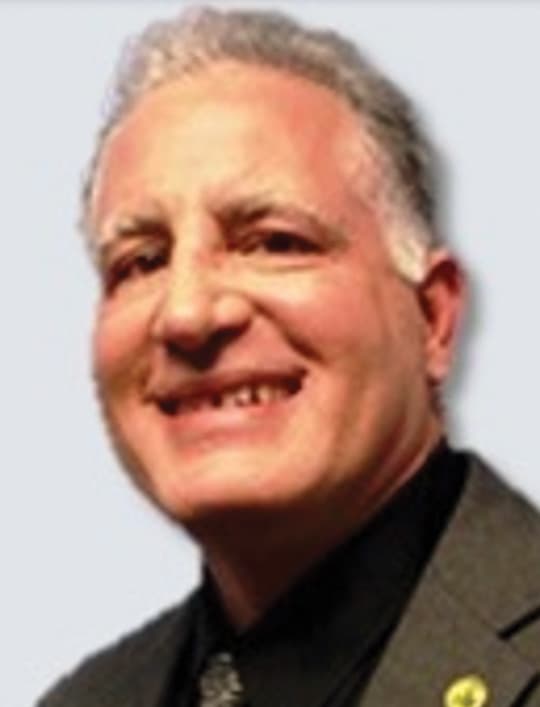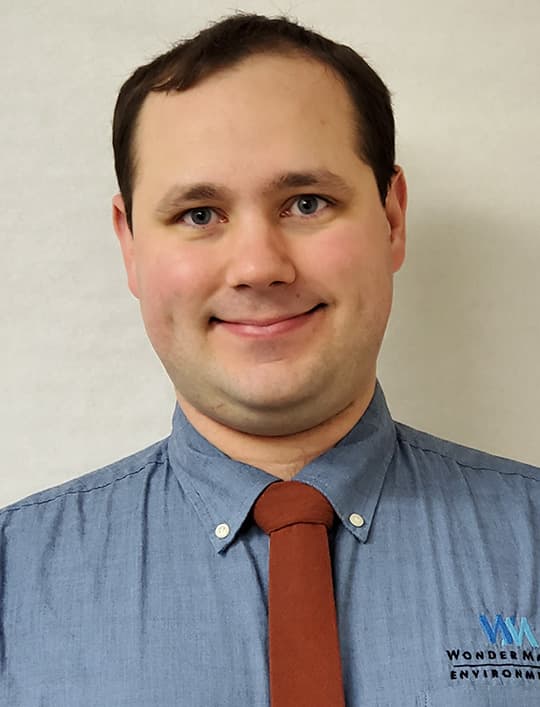Photo credit: sirawit99/ iStock / Getty Images Plus via Getty Images
Use New Technology to Minimize Project Liability
Mold Remediation Contractors Can
By Michael Pinto and Jacob Kooistra
Most mold remediation contractors have had a call that they dread. During the course of a project where part of the home or commercial building has been isolated, an occupant complains that they can smell the mold and have become ill because of "leaks" from the containment. An emergency return trip to the site, a visual review of all containment barriers, and confirmation of adequate and consistent negative pressure in the work zone all attest to the fact that the mold remediation project has not led to any cross-contamination. Despite all this, the occupant insists that they can "sense" the contamination in areas of the building where it was not present prior to the start of work.
In many cases, the situation just devolves into a "he said, she said" argument where each side is convinced that they are correct. Even trying to address the issue with data, such as spore trap air samples, can be tricky because the samples represent a spot time after the potential cross-contamination has occurred. Surface tape samples might be useful, but unless similar pre-work samples were collected from the area in question, it would still be difficult to determine whether any recovered fungal contamination was there before the work started or a result of some problem with the project.
What Is Needed
Thankfully, such problems do not develop on lots of jobs, but it happens frequently enough that if there was a reasonable way to verify the integrity of the project after a complaint was made, it would be a boon to the mold remediation industry. If there was a way that a mold air sample could run for an extended period of time and still have a meaningful analysis, such a sample could be set up outside the containment area and be utilized if concerns arose. However, the reality of the current "go to" sampling system for mold, spore trap samples is a run time of only 10 to 15 minutes. Having someone switching cassettes four to five times an hour on a 24/7 basis is not only impractical, it would be hugely expensive from a manpower and an analysis standpoint.
In this case, it is technology to the rescue. A new sampling procedure migrating into the mold arena from the allergy evaluation field has the ability to provide information on mold in the air, even with sample run times that are days long. This new technology, developed by a group called Inspirotec, is known as AirAnswers. The product offers an excellent option for long-term monitoring of fungal remediation projects. The technology incorporated into the AirAnswers monitoring device has been shown to effectively capture airborne bio-particulates related to allergens, fungi, molds and pathogens using sampling times ranging from one hour to five days.
A Different Sampling System
In contrast to most particulate sampling systems where the contaminants are captured on a filter media or sticky surface, the AirAnswers utilizes an electrokinetic particle capture process. Specifically, the AirAnswers system generates airflow over and around a sample cartridge consisting of two electrolyzed stainless-steel prongs, which serve as the system’s collection point for airborne particulate. This innovation leads to the collection of more overall particulates than traditional filter or adhesive-based sampling systems. It has the added benefit of capturing much smaller particulates than other sampling systems.
The collected sample cartridges are re-packaged in their initial protective case and submitted to the company’s laboratory for analysis. The Inspirotec analysis process allows the collected samples to be analyzed using a variety of bioanalytical techniques, such as enzyme-linked immunosorbent assays (ELISA), a method used for the identification of proteins, and quantitative polymerase chain reaction (qPCR), a technology used for measuring the DNA of living organisms. The qPCR process allows for the identification of minute amounts of specific material, down to the level of picrograms per cubic meter of air (pg/M3, or 1 trillionth of a gram of material).
The development of the AirAnswers system with such low detection levels of organic material was originally designed to assist with the identification of allergens from pet dander, dust mite feces, etc. While such testing remains a key market for the AirAnswers device, the apparent usefulness of the same capture system for fungal material was rapidly recognized. In order to offer an upgraded sampling process to the mold inspection industry, Inspirotec developed a specific battery of tests designed for cost-effective fungal sampling.
An Important Step Forward to Protect Mold Remediation Contractors
Understanding how AirAnswers works leads to an appreciation for it during a fungal damage restoration project. On a typical project, in the basement of a house, where the contractor comes away with the impression that this client is a potential liability risk, or just especially concerned regarding cross contamination, AirAnswers is an excellent extra layer of liability protection. In an effort to assure the homeowner, and prove that the remediation is well-executed, the contractor runs an AirAnswers sample on the main floor as an additional control measure.
Since the AirAnswers system can collect a sample over the course of five days, a single sample cartridge can collect a biological snapshot of the main floor for the entire duration of the remediation project. If everything goes well with the project, the sampling cartridge can be packaged and stored with the project file. If a question ever arises, or if the homeowner wants the peace-of-mind of knowing what is on the sample, the cartridge could be sent in for analysis.
The current list of mold types that can be identified by Inspirotec includes Aspergillus and Penicillium. These are typical molds used as "indicators" of structural water-damage and could cause significant health issues when they are present in water-damaged buildings. With such an analysis, in addition to the photographs taken during the course of the project, the contractor would have microscopic evidence that the area outside the work containment was not contaminated by the activities that went on in the basement.
More Than Just Technological Insurance Policy
Ultimately, even if the contractor is not dealing with an especially difficult client, there is promise in the AirAnswers system to start providing more accurate air sampling to the restoration industry. The development of a sample system that can provide for longer sampling windows, as compared to a 10-minute spore trap sample, can provide greater insight into the air quality of indoor spaces. The fact that the same cartridge could be analyzed for allergens and other microorganisms (even if the mold analysis did not reveal substantive contamination) is a whole new level of sophistication for the mold remediation and IAQA professional.
Because of this wide array of materials that can be sampled, pricing for AirAnswers is offered in an "à la carte" fashion. This means that not only can each sample submitted have multiple assay types selected based upon the needs of each project, but the final determination on what materials are evaluated do not have to be made until after the collection of the sample. The analysis process also allows for sequential analysis for different materials (mold, mycotoxins, allergens, viruses, beta glucan, etc.) after specific results are received. For example, if the client believes that the mold remediation was not done properly and caused headaches and respiratory distress for the occupants, mold contaminants can be evaluated. If the AirAnswers results show that mold is not the source of the symptoms, the contractor can request the same sample to be reevaluated for allergens, which are other contaminants that also correlate well with the reported symptoms.
AirAnswers has solid science behind it with multiple universities, which have partnered with Inspirotec to study the effectiveness of the sampling system. Recently, a number of actual in-field side-by-side comparison studies of the AirAnswers has been completed by IAQ professionals in order to compare the product to spore trap samples. Although these tests were conducted by noted consultants in the indoor air quality industry, the AirAnswers system has yet to face off against an adjuster or an attorney in an adversarial court of law. Nevertheless, the system seems to have significant promise to revolutionize certain aspects of the restoration industry.
Michael A. Pinto is chief executive officer of Wonder Makers Environmental, Inc. He has earned six professional designations including Certified Safety Professional (CSP) and Certified Mold Professional (CMP). Pinto is the author of over 230 published articles and several books including, Fungal Contamination: A Comprehensive Guide for Remediation. He has volunteered extensive time and expertise for the development of the RIA Forensic Restoration Guidelines, IICRC S520 standard for mold remediation, and the RIA/IICRC/AIHA white papers explaining proper procedures for addressing the SARS CoV-2 through cleaning and application of disinfectants. He can be reached at (269) 382-4154 or map@wondermakers.com.

Jacob Kooistra is an environmental specialist with Wonder Makers Environmental, Inc., a manufacturing and environmental consulting firm that specializes in identification and control of all types of indoor contaminants. For 10 years, Kooistra has worked in the property restoration industry, specializing in mold remediation and caring for sensitized individuals. In his current position, Kooistra assists building owners and occupants when they face indoor air challenges related to mold, lead, asbestos and chemicals. He can be reached at (269) 382-4154 or jsk@wondermakers.com.



